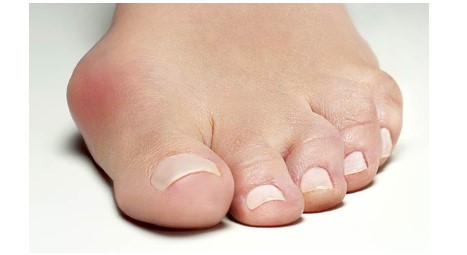Bunions are a common foot deformity that can cause significant pain and discomfort, often interfering with daily activities. For those suffering from severe bunions, surgery may be the most effective solution. This comprehensive guide will walk you through everything you need to know about bunion surgery, including the types of procedures available, what to expect before and after surgery, and tips for a smooth recovery.
What is a Bunion?
A bunion is a bony bump that forms on the joint at the base of your big toe. This occurs when some of the bones in the front part of your foot move out of place, causing the tip of your big toe to be pulled toward the smaller toes and forcing the joint at the base of your big toe to stick out. The skin over the bunion might be red and sore, and the condition can be both painful and unsightly.
Bunions can develop for various reasons, including genetics, arthritis, wearing tight or narrow shoes, or standing for extended periods. While some people can manage the symptoms with non-surgical treatments like orthotics, medications, or lifestyle changes, others may require surgery to relieve their symptoms.
When to Consider Bunion Surgery
Bunion surgery is typically recommended when non-surgical treatments have failed to provide relief, and the bunion is causing persistent pain that interferes with daily activities. You might also consider surgery if you experience any of the following:
- Difficulty walking or wearing shoes
- Chronic inflammation or swelling in the toe that doesn’t improve with rest or medication
- Toe deformity, where the big toe overlaps the second toe
- Stiffness in the big toe, making it difficult to move
It’s important to consult with a foot and ankle specialist to determine whether bunion surgery is the right option for you. They can assess the severity of your condition and recommend the most appropriate treatment plan.
Types of Bunion Surgery
There are several different types of bunion surgery, and the specific procedure chosen will depend on the severity of the bunion and the patient’s overall health. Some of the most common types of bunion surgery include:
- Osteotomy: In this procedure, the surgeon cuts and realigns the bones of the big toe joint. Metal screws or pins are often used to hold the bones in place during healing.
- Exostectomy: This procedure involves removing the bump from the toe joint. It’s often combined with an osteotomy to correct the alignment of the bones.
- Arthrodesis: This surgery involves fusing the bones of the affected joint to prevent any further movement. This is usually reserved for more severe cases or when arthritis is present.
- Minimally Invasive Bunion Surgery: This technique involves smaller incisions and less tissue damage, leading to a quicker recovery and less post-operative pain. It’s becoming an increasingly popular option for those looking to reduce downtime after surgery.
Your surgeon will discuss these options with you and help you determine the best approach based on your individual needs.
Preparing for Bunion Surgery
Preparation is key to ensuring a successful outcome for your bunion surgery. Here are some steps to take before your procedure:
- Consultation with Your Surgeon: Discuss your medical history, any medications you’re taking, and any concerns you may have. Your surgeon will likely order X-rays to assess the extent of the bunion and plan the surgery.
- Arrange for Help: You’ll need someone to drive you home after surgery and assist you for the first few days as you recover. Make sure you have everything you need at home, such as crutches, comfortable clothing, and pre-prepared meals.
- Follow Pre-Operative Instructions: Your surgeon may ask you to stop taking certain medications or to fast before the surgery. Make sure to follow these instructions carefully to avoid complications.
- Prepare Your Home: Set up a recovery area where you can rest comfortably. Place necessary items within easy reach, and consider arranging for help with household chores during your recovery.
The Day of Surgery
Bunion surgery is usually performed on an outpatient basis, meaning you can go home the same day. Here’s what to expect on the day of your surgery:
- Anesthesia: Depending on the type of surgery, you may receive local anesthesia (numbing only the foot) or general anesthesia (putting you to sleep).
- Surgical Procedure: The surgery can take anywhere from 45 minutes to a few hours, depending on the complexity of the procedure. Your surgeon will make an incision near the bunion, realign the bones, and secure them in place with screws or pins.
- Post-Operative Care: After the surgery, your foot will be bandaged, and you may be given a surgical shoe or boot to wear. You’ll be monitored in a recovery area before being discharged to go home.
Recovery After Bunion Surgery
Recovery time varies depending on the type of bunion surgery performed, but most patients can expect to be back on their feet within a few weeks. Here’s what you can expect during your recovery:
- Pain Management: You may experience some pain and swelling in the first few days after surgery. Your doctor will prescribe pain medications to help manage this discomfort.
- Elevate Your Foot: Keeping your foot elevated can help reduce swelling and speed up the healing process. Try to keep your foot elevated as much as possible for the first few days.
- Follow-Up Appointments: It’s important to attend all follow-up appointments with your surgeon. They will monitor your healing progress and remove any stitches or pins if necessary.
- Physical Therapy: Your surgeon may recommend physical therapy to help restore strength and mobility to your foot. Exercises may include range-of-motion activities, stretching, and strengthening exercises.
- Return to Normal Activities: Most patients can return to normal activities within six to eight weeks after surgery. However, it may take several months for the foot to fully heal, and you may need to wear special footwear during this time.
Tips for a Smooth Recovery
Here are some tips to help ensure a smooth recovery after your bunion surgery:
- Follow Your Doctor’s Instructions: Adhere to all post-operative care instructions, including taking medications as prescribed, attending follow-up appointments, and participating in physical therapy if recommended.
- Avoid Putting Weight on Your Foot: Use crutches, a walker, or a knee scooter to avoid putting weight on your foot until your doctor gives you the green light.
- Wear the Right Shoes: Once you’re able to wear shoes again, opt for supportive, comfortable footwear that provides plenty of room for your toes. Avoid high heels or narrow-toed shoes, as these can aggravate the surgical site.
- Be Patient: Recovery from bunion surgery takes time. Don’t rush the process, and give your body the time it needs to heal properly.
Conclusion
Bunion surgery can provide significant relief for those suffering from severe bunions, allowing you to return to your normal activities without pain. Whether you opt for a traditional approach or a minimally invasive bunion surgery, the key to a successful outcome lies in careful preparation and adherence to post-operative care instructions.
If you’re considering bunion surgery in Scottsdale, AZ, consult with a qualified foot and ankle specialist who can guide you through the process and help you achieve the best possible results. By taking the time to understand the procedure and what to expect during recovery, you can make an informed decision that will improve your foot health and overall quality of life.




